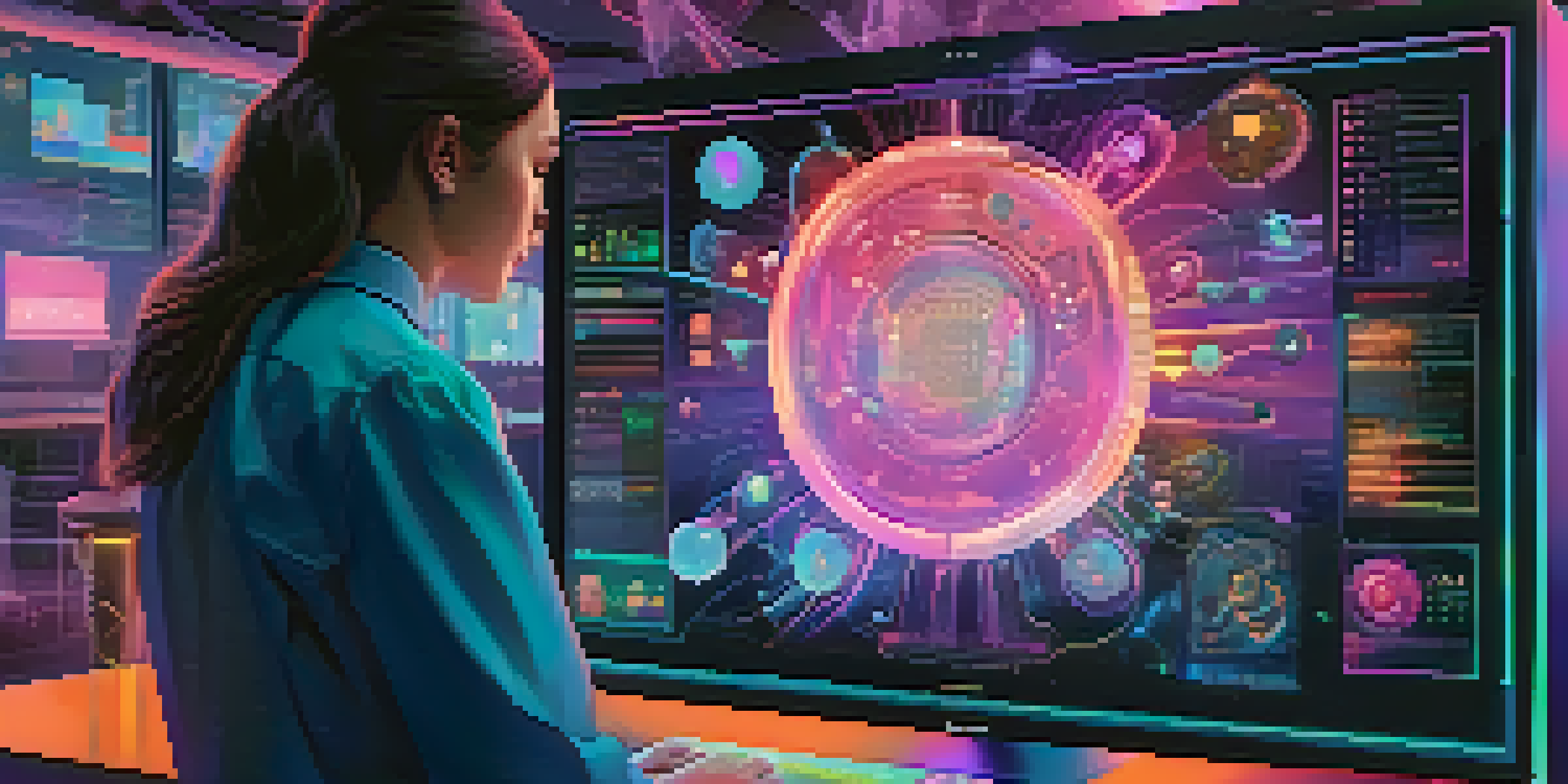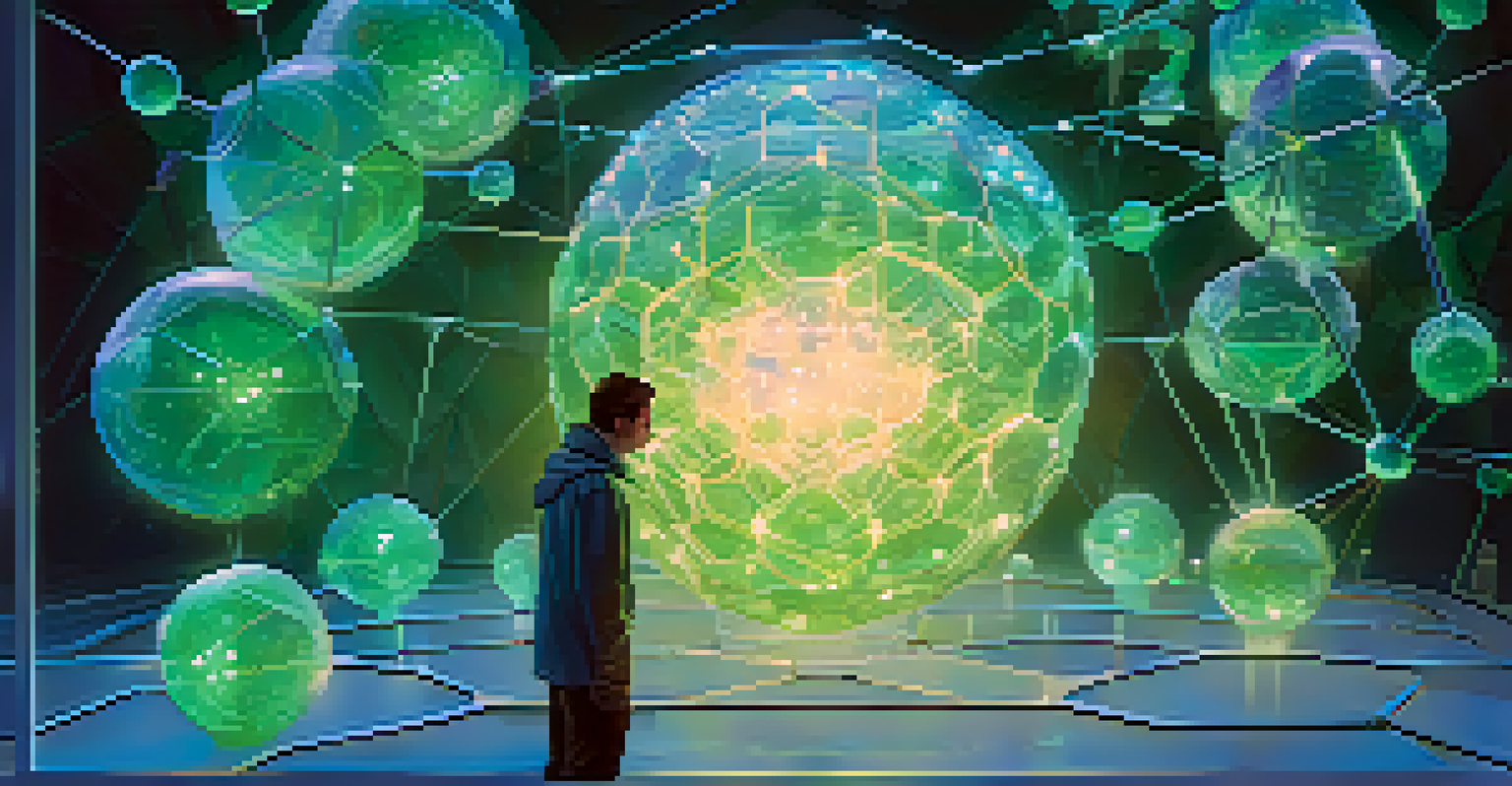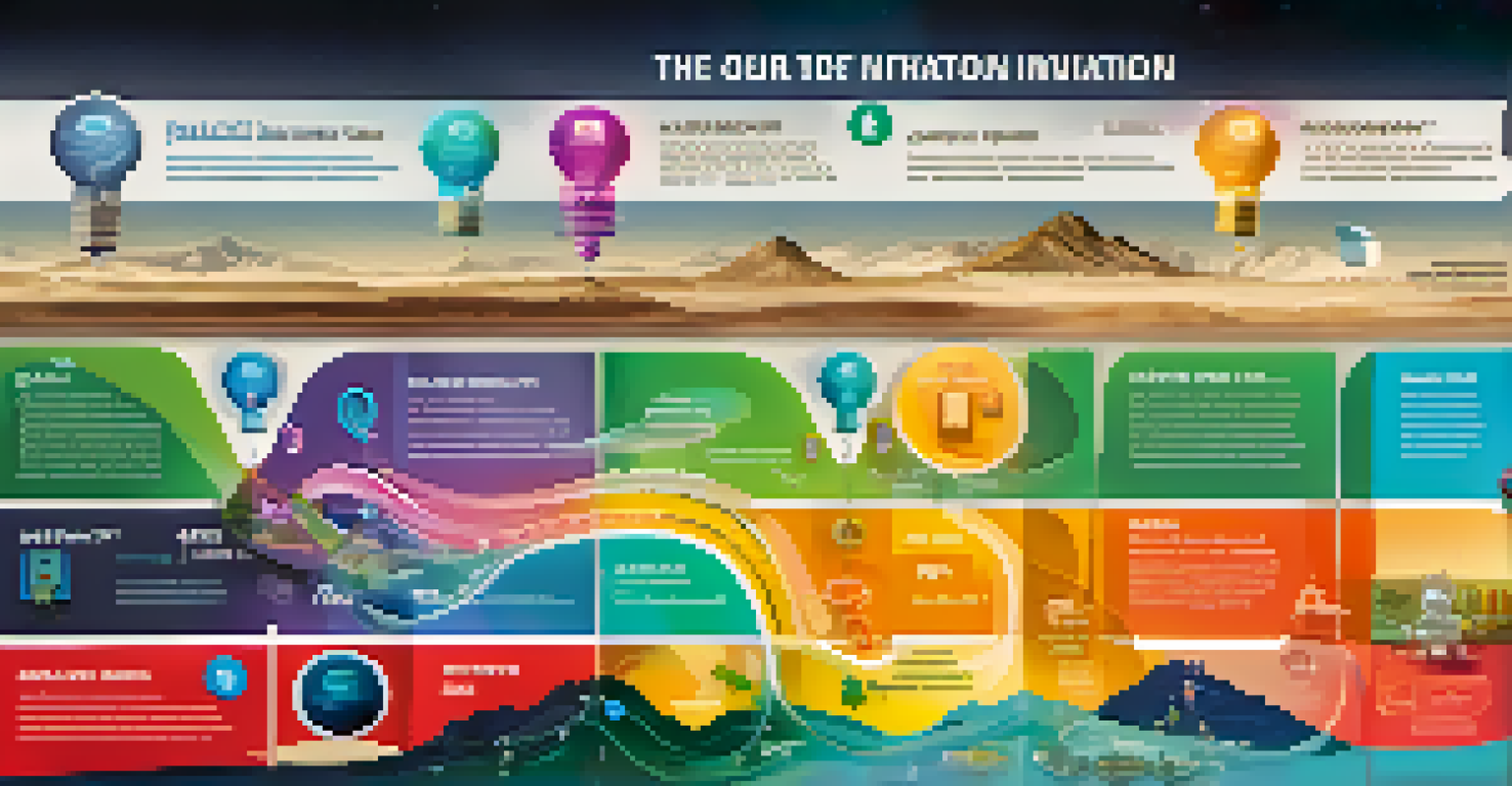NFTs and Intellectual Property: Protecting Scientific Innovations

Understanding NFTs and Their Growing Popularity
Non-fungible tokens (NFTs) have taken the digital world by storm, captivating both artists and collectors. Unlike cryptocurrencies like Bitcoin, which are interchangeable, NFTs represent unique digital items, making them ideal for art, music, and more. This distinctiveness has sparked interest beyond the art realm, leading to discussions about their potential in safeguarding intellectual property.
The digital age has given rise to a new form of ownership that challenges traditional concepts of intellectual property.
As scientists and researchers create groundbreaking innovations, the question arises: how can NFTs be utilized to protect these advancements? The answer lies in the unique attributes of NFTs, which can provide a verifiable proof of ownership and authenticity. This capability is particularly crucial in the realm of scientific innovations, where protecting intellectual property is vital.
Consequently, the rise of NFTs offers a promising solution for scientists looking to secure their work. By attaching an NFT to a scientific innovation, researchers can establish ownership and ensure that their contributions are recognized and protected. This intersection of technology and intellectual property is reshaping how we think about ownership in the digital age.
The Role of Intellectual Property in Science
Intellectual property (IP) refers to creations of the mind, such as inventions, designs, and artistic works, and it plays a pivotal role in protecting scientists' and inventors' rights. By securing IP rights, researchers can prevent unauthorized use of their innovations and ensure they receive credit and potential financial rewards for their work. This protection is essential in fostering an environment conducive to creativity and innovation.

In the scientific community, IP can take several forms, including patents, copyrights, and trademarks. Each serves a specific purpose, but they all share the common goal of safeguarding original ideas. However, traditional IP mechanisms can sometimes fall short when it comes to digital assets, leading to a growing interest in alternative solutions like NFTs.
NFTs Enhance Scientific Ownership
By attaching NFTs to research, scientists can establish verifiable ownership and protect their intellectual property.
By integrating NFTs into the IP landscape, researchers can enhance their ability to protect their work. NFTs provide a decentralized way to establish ownership, making it harder for others to claim credit for someone else's innovation. This technological advancement is crucial as we navigate an increasingly digital world.
How NFTs Can Transform Scientific Ownership
The transformation brought about by NFTs in the realm of scientific ownership is significant. By attaching an NFT to a research paper or a new invention, scientists can create a permanent, publicly verifiable record of their work. This not only solidifies their claim to their innovation but also facilitates easier tracking of its usage across various platforms.
NFTs not only represent ownership but also provide a new avenue for creators to monetize their work in a transparent manner.
Moreover, NFTs can help combat issues such as plagiarism and unauthorized usage of scientific work. When research is minted as an NFT, it becomes a unique asset that can be traced back to its creator. This traceability can deter potential infringers and foster a culture of respect for original contributions in science.
Additionally, the ability to sell or license NFTs opens new revenue streams for researchers. They can monetize their innovations by allowing others to use their work for a fee, while still retaining ownership rights. This innovative business model can encourage more scientists to share their findings, ultimately benefiting the scientific community as a whole.
Challenges of Implementing NFTs in Science
Despite the promise of NFTs, there are notable challenges that researchers must navigate. One significant hurdle is the technical barrier; many scientists may not be familiar with blockchain technology or how to create and manage NFTs. This lack of knowledge can hinder the widespread adoption of NFTs in the scientific community.
Another challenge is the environmental impact associated with some blockchain networks. The energy consumption of mining and transactions can be substantial, raising concerns about sustainability. Scientists are increasingly aware of their responsibility to the planet, and any solution must align with these values to gain acceptance.
Addressing IP Challenges with NFTs
NFTs offer a modern solution to traditional intellectual property issues, providing a decentralized method to secure innovations.
Furthermore, the legal landscape surrounding NFTs and IP rights is still evolving. Questions about enforcement, copyright infringement, and jurisdictional issues remain largely unanswered. Researchers will need guidance on these legal matters to navigate the complexities of combining NFTs with traditional IP protections.
Successful Examples of NFTs in Science
While the concept of using NFTs in science is still relatively new, there are already inspiring examples that showcase its potential. For instance, some researchers have begun minting their published articles as NFTs, allowing them to establish ownership and generate revenue from their work. This approach not only protects their IP but also promotes their research to a broader audience.
Another noteworthy example is the use of NFTs in scientific data sharing. Some initiatives have emerged where researchers can share their datasets as NFTs, ensuring that proper credit is given to the creators. This model encourages collaboration while safeguarding the original contributors' rights.
These early adopters are paving the way for a future where NFTs become a standard tool in the scientific community. As more researchers recognize the value of protecting their innovations with NFTs, we can expect to see a shift in how scientific work is shared and monetized.
Future Prospects for NFTs in Scientific Innovation
Looking ahead, the potential for NFTs in the scientific world is vast. If researchers can overcome the technical and legal challenges, NFTs could become a cornerstone of how scientific innovations are protected and shared. The ability to attach a unique digital token to a research project can transform the landscape of scientific ownership.
Furthermore, as the public becomes more familiar with NFTs, there is an opportunity for increased collaboration between scientists and digital creators. This synergy could lead to innovative projects that merge scientific research with artistic expression, ultimately enriching both fields.
Future of Science with NFTs
The integration of NFTs in science could transform how innovations are shared and monetized, fostering collaboration across fields.
In summary, the future of NFTs in science looks promising. As technology continues to evolve, scientists who embrace these digital innovations may find new ways to protect their work and drive progress in their fields, ensuring their contributions are acknowledged and valued.
Conclusion: Embracing NFTs for Scientific Advancement
In conclusion, NFTs present an exciting opportunity for the scientific community to protect and monetize their innovations. By leveraging this technology, researchers can establish clear ownership of their work, contributing to a culture of respect and recognition in science. The potential to track usage and combat plagiarism makes NFTs a valuable asset in the fight against intellectual property theft.
However, it’s essential to address the challenges associated with implementing NFTs, including the need for education, sustainability concerns, and legal clarity. By tackling these issues head-on, scientists can pave the way for a more secure and innovative future.

Ultimately, embracing NFTs could lead to a significant shift in how scientific innovations are shared and recognized. As we move forward, the collaboration between technology and science will be crucial in shaping a landscape that values and protects intellectual contributions.